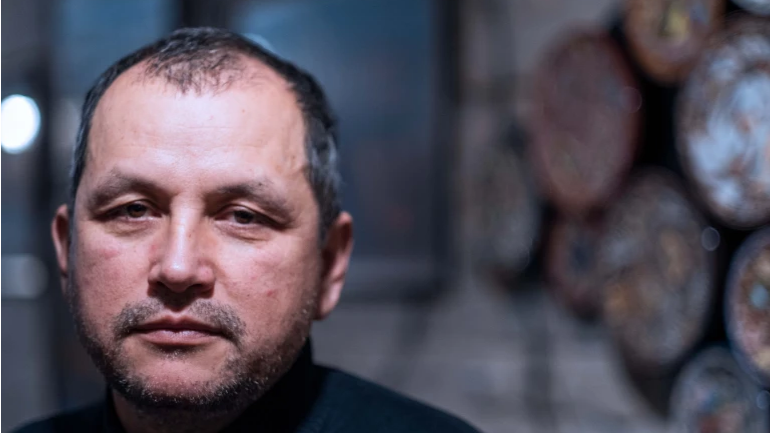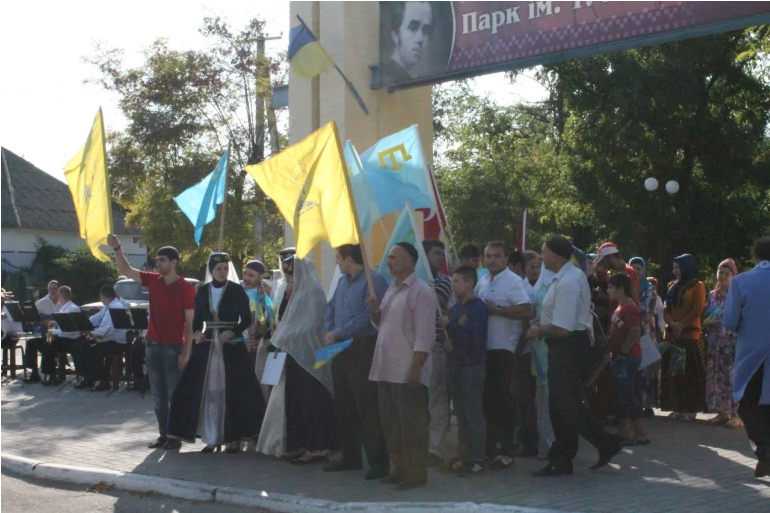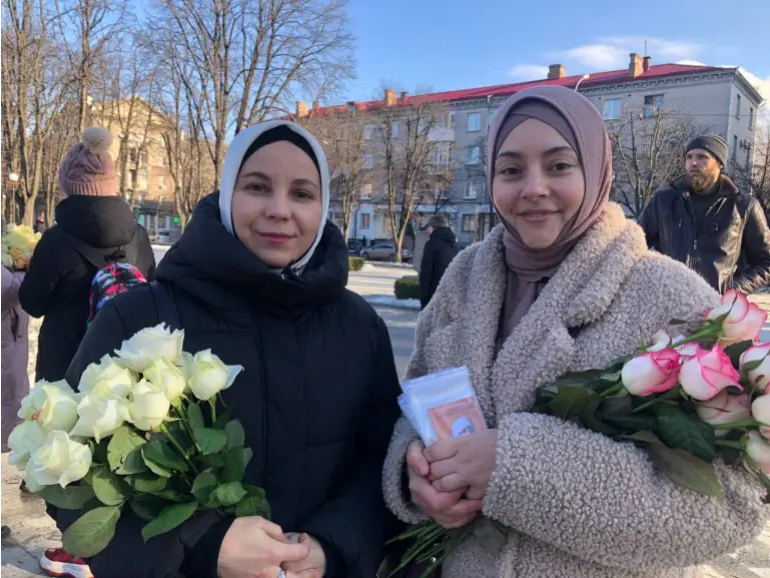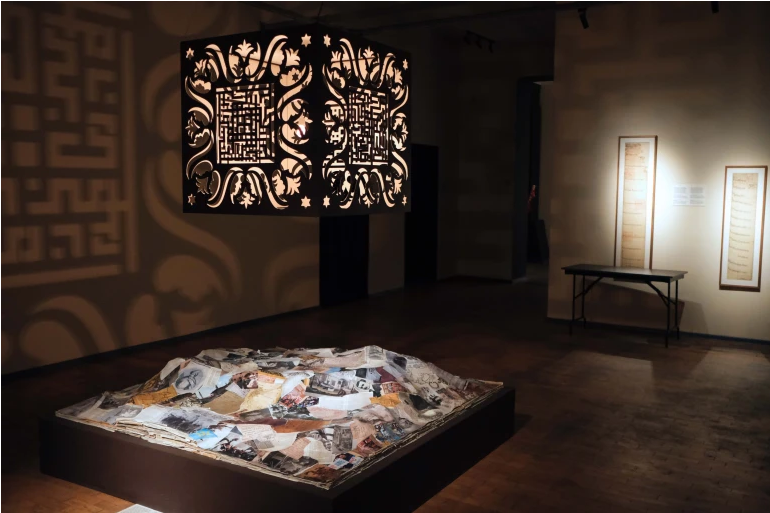Ukraine: Rising tensions put Crimean Tatar Muslims at risk again

By
Erfan Kudusov, 53, was in his twenties when the Crimean Tatars, a Turkic ethnic group to which he belongs, returned to their homeland after more than 45 years in forced exile.
He wipes away a tear as he recalls the overwhelming joy he felt when he arrived.
“Older people, when they first stepped off the plane, they kissed the land. People were crying with happiness; they were back in their homeland,” he told Al Jazeera.
But in 2014, after Russia annexed Crimea, Kudusov, along with tens of thousands of Crimean Tatars, had to leave their homeland once again.
He has since started a popular Crimean Tatar restaurant in Kyiv, the Ukrainian capital, just off the famous, central, mile-long Khreshchatyk Street, home to shops and the philharmonic orchestra.
Now, with more than 100,000 Russian troops along the border with Ukraine and the looming threat of further war, Crimean Tatars in Kyiv and other Ukrainian cities like Kherson face a renewed threat of occupation.
Forced exile
Crimean Tatars are a Muslim ethnic minority indigenous to the Crimean Peninsula, on the northern coast of the Black Sea. In 1944, all 180,000 Crimean Tatars living in Crimea were forced onto cattle trains and exiled to Uzbekistan under the orders of Joseph Stalin.
It is estimated that about half the Crimean Tatars died either during the journey to Uzbekistan or from subsequent disease and starvation during their first two years in exile.
Four countries, including Ukraine, have recognised this deportation as genocide.
When the Soviet Union collapsed in 1991, the peninsula became part of Ukraine, and the Crimean Tatars were able to return to their homeland.
They faced challenges on their return, such as being blocked from buying or renting homes, including those that they had previously owned before the deportation.
Kyiv-based translator Zakhida Kataky, 34, remembered the moment her grandmother attempted to visit the house she was forced from in 1944.
“She knocked on the fence, but when the owners came out and realised what she wanted, they dismissed her in a very rough manner,” she told Al Jazeera.
The Crimean Tatars also faced stigma and discrimination after decades of Soviet propaganda had labelled them as Nazi collaborators, despite tens of thousands of Crimean Tatars having served in the Red Army.
Over the years, conditions improved.
For example, in 1991, a Crimean Tatar representative body called the Mejlis was formed. In addition, Crimean Tatar language schools were introduced to reverse the effects of the Soviet ban on the study of the language.
Russia’s annexation of Crimea
In March 2014, Russia occupied and officially annexed Crimea after a disputed and internationally rejected referendum.
Kudusov feared discrimination and persecution similar to what he experienced during his exile and joined many of the 300,000 Crimean Tatars in boycotting the referendum.
The occupying forces immediately began to crack down on Crimean Tatars and pro-Ukrainian activists.

On March 3, 2014, Reshat Ametov, a Crimean Tatar from the Simferopol region, was led away from a protest by three unidentified men in military-style jackets. His body was later found bearing marks of violent death. It was the first of several enforced disappearances.
Kudusov, fearing a similar fate, packed his bag and left Crimea with his wife and four children to start a new life in Kyiv.
Later, Russian authorities would ban the Mejlis, the Crimean Tatar representative body – labelling it an extremist outfit – and close a Tatar television channel.

About 10 percent of Crimean Tatars have moved from the peninsula since the annexation, often to Kherson, a city in southern Ukraine, or Kyiv.
But despite renewed tensions, Kudusov is confident that Ukraine will be able to repel a further invasion from Russia because of its larger and improved armed forces compared with 2014, when the conflict began.
Instead, he is convinced that Crimea will be returned to Ukraine.
“Crimean Tatars will absolutely return again,” he said. “My grandparents were deported and spent 45 years in exile, but they always told me we would come back, and we did.”

Sorina Seitveliiev, whose husband is a Crimean Tatar, now manages Musafir, another Crimean Tatar restaurant in Kyiv serving soups, pastries, dumplings and traditional Turkish coffee prepared on hot sand.
She also believes that Crimea will return to Ukrainian hands and referred to Russia’s costs incurred by the annexation of the peninsula.
Russia has spent tens of billions of dollars on infrastructure projects in Crimea, including a 19-km-long bridge linking the peninsula to mainland Russia and new highways, hospitals, power plants, and transmission lines.
The subsequent sanctions imposed on Moscow after the annexation have cost Russia up to 8 percent of its gross domestic product (GDP), according to a study by Daniel Ahn and Rodney Ludema, former top economists at the US Department of State.
However, other analysts have disputed this figure, including Ukrainian analyst Aleksey Kushch, who claim it is closer to a 1 percent loss in GDP.
Crimean Tatar culture and religion
Several establishments around Kyiv now display the Crimean Tatar flag, a golden tamga depicted on a blue background alongside the Ukrainian national flag, a sign of a relationship that has been strengthened since 2014.
Seitveliiev believes that the awareness of Crimean Tatar issues and their history among Ukrainians has increased in recent years.
In 2016, Jamala, a Crimean Tatar singer, won the Eurovision contest with an entry about the mass deportation of her people, titled 1944.
“I think the first time Ukrainians heard about this history was with this song,” said Seitveliiev.
In recent years, several projects have sprung up around Kyiv to promote and observe the human rights of Crimean Tatars.
A current exhibition at the Crimean House, a cultural centre in Kyiv, is on the history and art of the Crimean Tatar people.
“Crimean Tatars have great respect for their culture and never lose it, wherever they are,” said Polina Nesterova, 20, a student visiting the exhibition.
“But they shouldn’t be forced to leave their homes constantly; they should be able to return to Crimea and live there in peace.”
Kamila Yurchenko, who works at the Religious Administration of Ukrainian Muslims, described the minority as an integral part of Ukraine’s “multinational” Muslim community.
There are estimated to be 100,000 practising Muslims in Kyiv alone, many from Uzbekistan, Azerbaijan and Kazakhstan.
At the city’s Ar-Rahma Mosque in Kyiv, children can attend classes in their native language, including Crimean Tatar.
“Crimean Tatars are Muslim, and that is inbuilt in our mentality; our customs are built around our religion”, said Marlen Kataky, 44.
There are about 400,000 Muslims in Ukraine, with the majority being Crimean Tatar. Their future now largely depends on the ongoing diplomatic efforts by world leaders to defuse escalating tensions.
“Ukraine is our motherland, and we worry what will happen to it and what will happen to us,” said Yurchenko.









